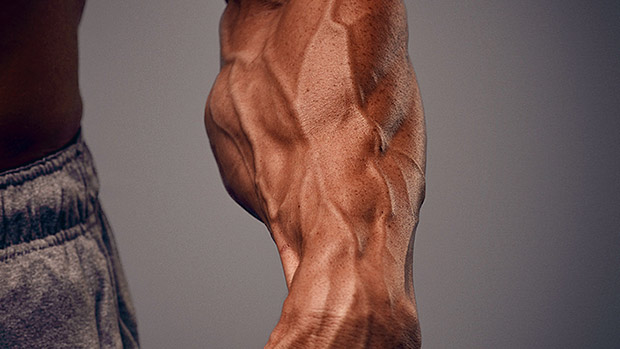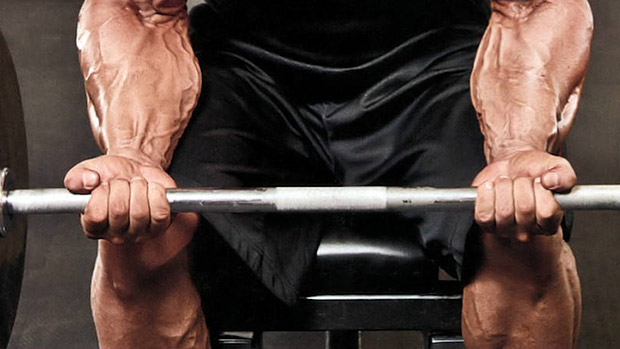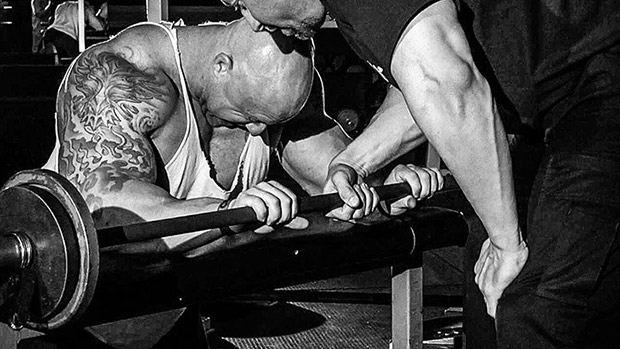Nothing completes your arm development like a thick, muscular forearm. But many people ignore direct forearm training. They assume that heavy deadlifts, pull-ups, and farmer's walks are all you need for big forearms.
True? It depends. If you have any health issues with your joints or connective tissues, you should avoid direct forearm work until things are resolved. If you're blessed with a naturally thick, muscular build and relatively short arms, you can build massive forearms with just the big lifts.
But if you're naturally skinny with long limbs and puny joints, you need to play by different rules. If this is you, here are your rules when it comes to building smaller muscle groups:
- Rule 1: Nothing grows without consistent emphasis on the big lifts.
- Rule 2: Your smaller muscle groups will always stay underdeveloped if you don't give them some direct love.
If you want to maximize your arm development and you didn't win the genetic lottery, adding a small amount of direct forearm work to your big lifts will make a big difference.
The trick with effective forearm training is to not overdo it. If you train properly, you already indirectly work your forearms multiple times per week with plenty of mechanical tension. Now, all you need to do is add a little direct metabolic stress once a week to supercharge your growth.
Years ago, my training partners and I decided to add some forearm training into our routine. It was the last exercise of the last training day of the week. At that point, we were exhausted and just wanted to go home. We came up with this idea to alternate wrist extensions with wrist curls and simply drop the weight each set instead of stopping to rest.
In less than 3 minutes, my forearms where on fire and engorged with blood. Because I wasn't using heavy weights (and the weights were decreasing each set) I was able to get huge metabolic stress with very little joint stress. A while later, I saw myself on video and was shocked to see how much my forearms had grown.
As a refresher, wrist curls are performed palms up:
And wrist extensions or reverse wrist curls are performed palms down:
The 3-Minute Forearm Blast
- 1st set of wrist extensions, no rest
- 1st set of wrist curls, no rest
- Decrease weight
- 2nd set of wrist extensions, no rest
- 2nd set of wrist curls, no rest
- Decrease weight
- 3rd set of wrist extensions, no rest
- 3rd set of wrist curls
Equipment
You can do this with barbells, dumbbells, or a cable stack.
Reps and Starting Weight
Start with a weight you can use for about 8-10 reps. It's normal that you can use more weight on your wrist curls than your extensions, so your starting weight for each will be different.
Weight Decreases
Because your only rest time is training the opposite side of your forearm, you'll have to decrease the weight each round. If you're using an adjustable barbell, a 5 pound drop is usually sufficient because you'll have more rest time while you're changing plates.
Pre-set barbells, pre-set dumbbells, and cable stacks can go with bigger drops of 10 pounds (5 per dumbbell) because there's no time needed for loading a barbell.
Progressions
Each week, try to get more reps. Once you can do 12-15 reps, you can increase the weight, start back at lower reps, and work your way back up.
Long-Term Programming
Continue using this protocol until you take a deload week. Don't do direct forearm work during your deload week. Then, if you want to continue, keep going or switch to a different piece of equipment (e.g. switch from barbells to dumbbells).







